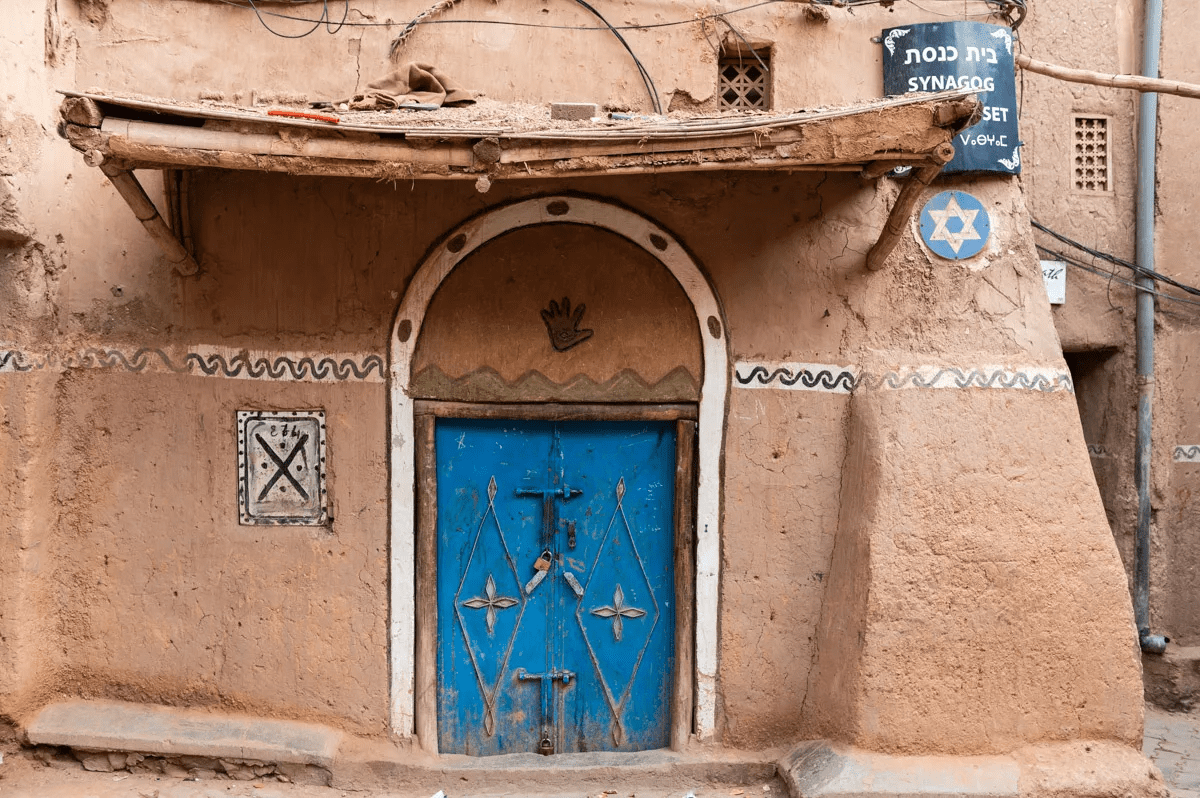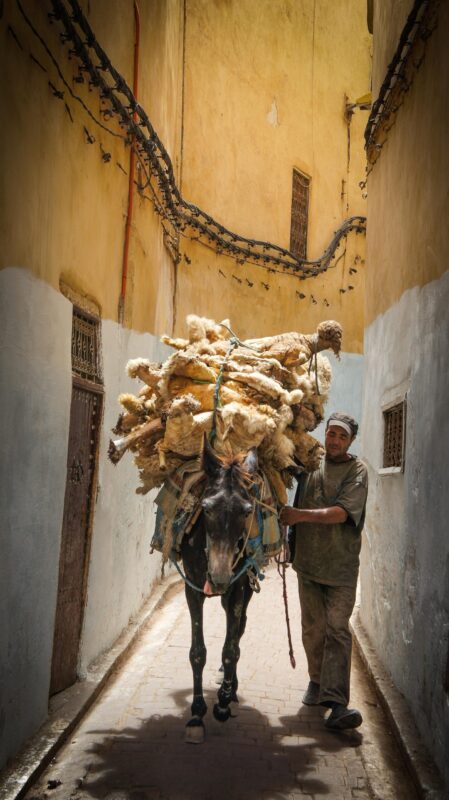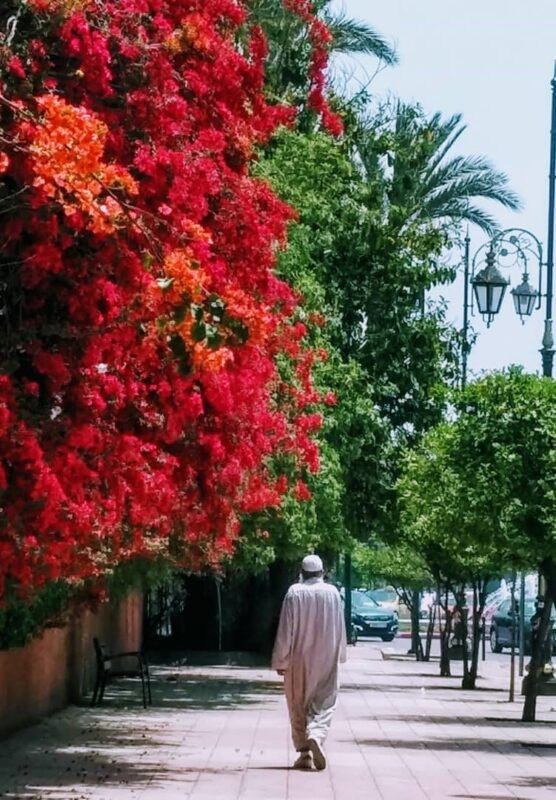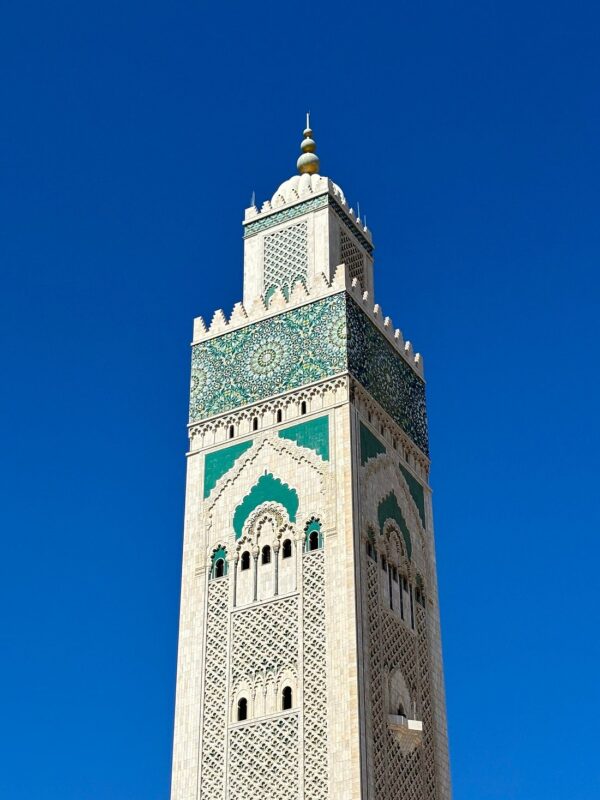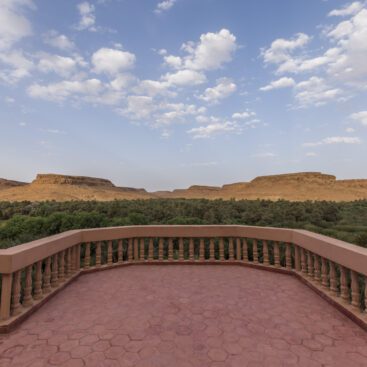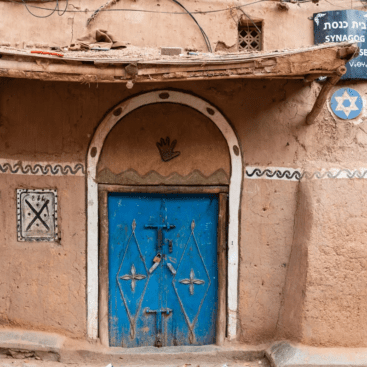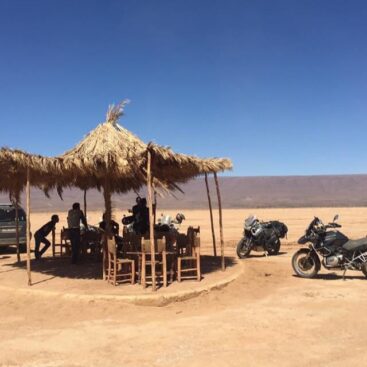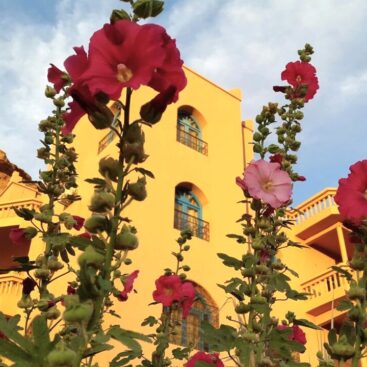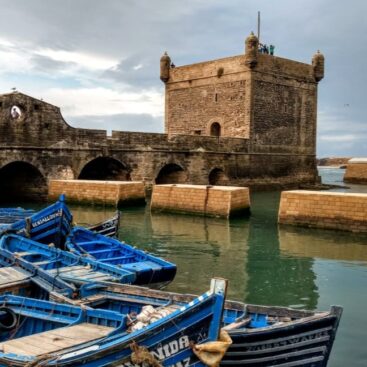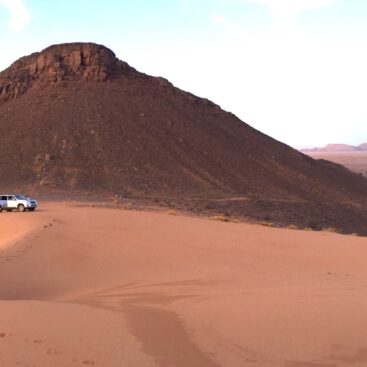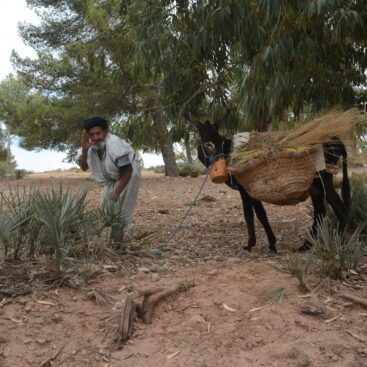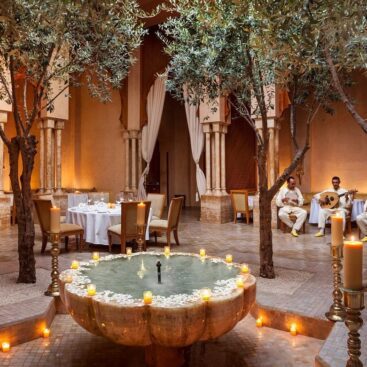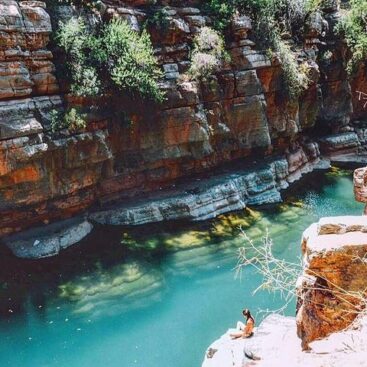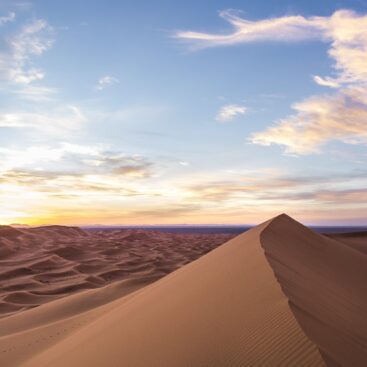Morocco, a predominantly Muslim country, boasts a rich tapestry of cultural diversity, where the Jewish community has coexisted harmoniously for centuries, with roots tracing back to Roman times and an immigration history that spans as early as 70 AD. This unique blend of cultures offers an immersive experience for travelers eager to delve into the Jewish Heritage and understand the intricate ways in which Jews have integrated into the fabric of Moroccan society.
Embark on a 13-day customizable journey that promises to enrich your understanding of Moroccan culture and the remarkable history of its Jewish population. From bustling medinas to serene synagogues, this itinerary is designed to take you on a captivating exploration of the traditions, customs, and shared experiences that have shaped Morocco’s vibrant multicultural landscape.
Each day holds new discoveries, from visiting historic Jewish quarters, where you’ll encounter stunning architecture and learn about the community’s rich past, to engaging in cultural exchanges with locals who warmly welcome visitors into their homes and share stories of coexistence and resilience. You’ll also have the opportunity to sample delicious Moroccan cuisine, infused with flavors and influences from both Muslim and Jewish traditions.
But the beauty of this itinerary lies in its flexibility. Whether you have more or fewer days at your disposal, our team is dedicated to crafting a personalized experience tailored to your interests, preferences, and time constraints. Contact us today to start planning your unforgettable journey through the heart of Morocco’s cultural mosaic.
To customize your trip, contact us for more information!
Casablanca is the largest city in Morocco, with 3.7 million inhabitants. It is a coastal city located in the western part of Morocco and is considered the economic and business center of the country.
In Casablanca, you can visit the Hassan II Mosque, an imperial sanctuary that is incredibly beautiful. It is the second largest functioning mosque in Africa and the 7th largest in the world, built right on the sea.
We will visit the Museum of Moroccan Judaism, founded in 1997. The ethnographic museum has two distinct spaces: one reserved for temporary exhibitions and a second area, consisting of three rooms, dedicated to the permanent exhibition. The Jewish cemetery in the Mellah (Jewish Quarter) is open and tranquil, with well-preserved white stone markers in French, Hebrew, and Spanish. Once a year, the residents of Casablanca celebrate a hiloula, or prayer festival, at the tomb of the Jewish saint Eliahou.
For dinner, we recommend the famous “Rick’s Café” (we can make a reservation in advance if needed), a charming and iconic place built to recreate the movie Casablanca. Here, you can enjoy live traditional Arabic music while dining in this wonderful riad. The food is a well-crafted blend of European and Moroccan cuisine.
Rabat is a city that grew up in the 14th and 15th centuries, with the expulsion of Andalusians from the Iberian Peninsula. It is surrounded by three walls corresponding to the most remarkable phases of its history: the Almohad Wall, the Andalusian Wall and the Alawite Wall. Your guide will show you walls and the main points of the city, such as the Hassan Tower, situated on top of an imposing mosque, the opulent tomb of Mohammed V, decorated with stained glass, white marble and a wrought iron entrance with a staircase leading to an impressive dome.
Walk through the Kasbah das Oudayas, an ancient military fortification built in the 12th century, overlooking the Atlantic Ocean. The history of the place is visible through the monuments that make up the Kasbah as: its famous monumental door (bab el-Kébir, one of the emblems of Almohad architecture); the royal residence of the Alaouite dynasty (still reigning); the Jamaa el Atiq mosque; the princely house erected to the west; the military structure of Borj Sqala. Visit Jewish Mellah, which today is home to few Jewish families.
After lunch we will head towards Tangier and on the way we will stop at Asilah and visit the Caves of Hercules and Cape Spartel.
Asilah is surrounded by the sturdy stone fortifications built by the Portuguese in the 15th century and it is these walls, flanked by palm trees, that have become ex-libris of the city. At the southern entrance of the Medina it is still possible to see the, now quite eroded, Portuguese coat of arms. The Medina and walls have been restored in recent years and the narrow but quiet streets and alleys lined with whitewashed houses and richly ornate windows are ideal for a stroll, and make the city a favorite spot for photography within Morocco.
Discover the vibrant city of Tangier, where the medina and kasbah stand as testaments to its rich history, a melting pot of civilizations and cultures that have left their mark. This city, renowned for its artistic freedom and unique customs, served as a haven for renowned authors like Paul Bowles in the 20th century. After immersing yourself in Tangier’s history, embark on a journey to Tetouan, Morocco’s hidden gem nestled between the Rif Mountains and the Mediterranean Sea. Tetouan, a city untouched by mass tourism, offers a glimpse into Morocco’s past, where you can lose yourself in its authentic medina and appreciate the essence of Moroccan life.
Tetouan boasts a rich history rooted in the Moorish and Jewish communities who fled the Spanish Inquisition, creating a unique Judeo-Spanish dialect and a thriving Jewish quarter with over 170 houses and 16 synagogues by the late 19th century.
After lunch, continue your journey to Chefchaouen, a serene blue paradise that stands out among Morocco’s medinas with its harmonious and natural layout.
Chefchaouen, nestled between the Rif Mountains and the Middle Atlas, invites visitors to explore its charming medina, famous for its handicrafts, goat cheeses, and breathtaking scenery. The city’s blue hue, a testament to Jewish customs and beliefs, adds to its charm and makes it an ideal destination for those who seek tranquility and delight in cultural and architectural details. Similar to Tetouan, Chefchaouen’s Jewish community also found refuge here during the Spanish Inquisition, painting their homes blue in reverence to the divine. This blue hue, common in Judaism, adds a spiritual dimension to Chefchaouen’s already enchanting atmosphere.
Embark on a captivating journey to Fes, stopping along the way to marvel at the imperial city of Meknes and the exquisite Roman ruins of Volubilis, a beautifully preserved example of a large Roman colonial city.
Meknes, under the visionary Sultan Moulay Ismail, aspired to become the crown jewel of North Africa, emulating the grandeur of Versailles and fostering diplomatic ties with Louis XIV of France. This ambitious sultan even sought a marriage alliance with the French royal family, earning Meknes the nickname “Maghreb Versailles.”
Nestled in the Meknes region, the city boasts a thriving wine industry, leveraging highly esteemed French grape varieties. Meknes is also rich in Jewish history, hosting several synagogues, including the El Krief, a community center, and the renovated Jewish Cemetery in Mellah de Meknes. The presence of Hebrew epitaphs from the Christian era, alongside Greek inscriptions, underscores the city’s cultural diversity and is further evidenced in the Jewish zaouia, a pilgrimage site where Rabbi David Benmidan still resides.
Exploring Meknes’ streets, you’ll notice that many are named in honor of Jewish rabbis and other prominent figures who once called this city home. While eleven synagogues remain, none are actively used today, serving as poignant reminders of Meknes’ past.
As the afternoon draws to a close, arrive in Fes, a city that shines in the soft light of the setting sun. Enjoy a panoramic tour of Fes, immersing yourself in its breathtaking beauty and historic charm.
Paul Bowles’ enchanting description of Fez as a “sheltered enchanted labyrinth of time” sets the stage for an unforgettable exploration of this mystical city. Join a dedicated guide, solely focused on Fez, to delve deep into its intricate corners, rich traditions, and captivating tales.
Once the capital of Morocco, Fez is a vibrant melting pot of Fatimid, Andalusian, Arab, Berber, and Jewish influences. This city boasts the largest Jewish community in Morocco since the 9th century, with the first Mellah, a Jewish quarter, established here between the 14th and 16th centuries. Prior to this, Jews and Muslims coexisted in the fortified administrative city of Fes El-Jdid.
Discover the unique architecture of Mellah’s Jewish houses, which contrast with the traditional Moroccan-style houses of ancient Fes. Visit notable synagogues, such as the Rabbi Shlomo Ibn Danan Synagogue, founded by the Ibn Danan family, and the nearby Mansano Synagogue.
Experience the legacy of Maimonides, the renowned Jewish scholar who resided in Fez from 1159 to 1165. Despite persecution from the Almoad dynasty, Maimonides contributed to the intellectual life of the city. Visit the Centre Communautaire Maimonide, a well-organized community center with a kosher restaurant and modern synagogue.
Step into the 13th century, when Fez flourished as a center of knowledge, hosting one of the oldest universities in the world – Al Quaraouiyine University. Explore the Medina of Fes, the most impressive of North Africa’s historic medinas, with its labyrinthine streets and hidden alleys. Witness the traditional trades and ancient tanneries, where leather is crafted using time-honored techniques. Don’t miss the famous “Chouara” tannery and marvel at the intricate Moroccan decoration showcased in Quranic schools.
We embark on our journey in the morning, bound for the enchanting cedar forests where nature’s splendor will captivate your senses. The serene atmosphere, crisp air, and the alluring scents of the wilderness create a tranquil escape.
Our first destination is Sefrou, the cherry capital of Morocco, nestled south of Fes. We delve into the city’s rich history and vibrant Jewish heritage, earning it the nickname “Little Jerusalem.” Discover the Mellah de Sefrou, which comprises half of the charming old town, where houses adorned with wooden balconies stand testament to Sefrou’s past as a significant Jewish center in Morocco. Witness the harmonious coexistence of religions in this city, a testament to Morocco’s interfaith traditions.
Next, we journey to Ifran, affectionately known as “Moroccan Switzerland,” a breathtaking locale that invites contemplation amidst its lush mountain vistas. Winter brings a blanket of snow, transforming the landscape into a winter wonderland. Along the way, keep your eyes peeled for monkeys and other wildlife native to these cedar forests, adding an extra layer of excitement to your adventure.
As the day draws to a close, we arrive in Midelt, where we retire to a cozy hotel overlooking a serene lake, embraced by the purity of nature. This idyllic setting promises a restful night, setting the stage for more unforgettable experiences to come.
Start the day on your way to the deepest desert. The journey is made smoothly through slopes and dunes that our guide knows like the back of his hands.
Perform various activities in the desert, which can be of the most varied type: quad rides, Moroccan cuisine workshops or even contact nomads, embracing their music and traditions.
We continue to Rissani, which is the capital of the historic Tafilet region. In the past it was an important trading post, as it was on the route of the Saharan camel caravans. Gold, spices, fabrics and… weapons and slaves were traded there. It has a market and a souk that is very interesting to visit, it is like entering an epic film of the Middle Ages, a very authentic place with amazing products, donkey market included!
The Jews were important to both Rissani’s economy and spiritual life. One of the most important was Rabbi David Abuhatzeira, who is buried in the Jewish cemetery of Rissani, outside the city walls.
The Jews also lived in the Erfoud region for thousands of years. There was no mellah in Erfoud. Jews and Muslims lived together in the medina. In 1960, the Moroccan census showed that the municipality of Erfoud had 3,239 Muslims and 1,183 Jews.
Next, we will go to the depository of the nomadic peoples of Khamlia, a lost village where the original Gnawa people live, first brought from Sudan as slaves. There you can enjoy their music, lifestyle, culture and tradition. Discover life in the middle of the Sahara. Moroccans are an incredibly hospitable people.
At the end of the afternoon, take a camel ride through the dunes of Erg Chebbi, for about an hour, until you reach the Berber tent where you will spend the night. The colors of the late afternoon in the dunes are the delight of those who like photography. There, dinner will be served and then there will be traditional live music on the wheel of a fire. This music based on drums and guitars is engaging and irresistible. Then comes the absolute silence of the desert that invites to interiority.
After savoring a delicious breakfast and witnessing the breathtaking sunrise over the dunes, we embark on a journey to the captivating town of Ouarzazate.
Our first stop is the awe-inspiring Todra Gorges, where towering cliffs soar to a height of 300 meters, separated by a mere 15 meters of breathtaking beauty. Here, we take a leisurely stroll along the river, immersing ourselves in the grandeur of this unique rocky terrain, where every turn reveals a new marvel of nature.
Next, we traverse the stunning Dades Valley, a place of unparalleled natural beauty and geological fascination. This valley is a diverse landscape, with arid mountainscapes reminiscent of the desert, fertile valleys where the sounds and scents of nature are ever-present, and snow-capped peaks in the winter months. Scattered throughout the valley are typical Kashbahs, ancient walled villages that offer a glimpse into Morocco’s rich history and culture. Additionally, we marvel at Jbel Saghro, a mountain that stands apart from the rest, its arid landscape akin to the surface of the Moon, adding an otherworldly touch to our adventure.
Continuing along the enchanting “Route of the Thousand Kasbahs,” we make our way to Kalaat Mgouna, the City of Roses, where the air is fragrant with the sweet scent of blooms. Our journey also includes a visit to the oasis of Skoura, a serene oasis dotted with ancient Kasbahs, each one a masterpiece of Moroccan architecture, surrounded by lush palm forests that provide a cool oasis in the heart of the desert. This journey promises to be a memorable experience, filled with breathtaking scenery and rich cultural insights.
We will continue our journey and stop at Ait Benhaddou, the most important site on the route of the ‘Thousand Kasbahs’, classified as a UNESCO World Heritage Site. He is famous for having served as the setting in many Hollywood films, such as “The Mummy”, “The Gladiator” and “The Game of Thrones”.
On the way to Marrakech, we will make several stops: we will be able to visit the craft cooperatives and see how the famous Moroccan carpets are handmade, how argan oil is produced, etc.
We will finally arrive in Marrakech where there are surprises around every corner, from artists playing original or traditional instruments, all kinds of products and shows, modest gardens and colorful and aromatic markets.
During the day, be accompanied by a guide dedicated exclusively to the city of Marrakesh, so that you can enjoy the best this city has to offer, explore its history and the atmosphere of fantasy and surprise that Marrakesh always has.
There are several monuments to visit, among which the following stand out:
Madrassa Ben Youssef: This 12th-century Islamic college in Marrakesh was built by the Sultan Ali ibn Yusuf of Morocco. Today it is a museum that can be visited. The interiors are wonderful, all decorated and its architecture is amazing.
Koutoubia Mosque: Without a doubt the most famous and most photographed monument in Marrakesh. The Koutoubia Mosque was built in the 12th century and was the model for the Giralda in Seville and the Hassan Tower in Rabat.
Bahia Palace: This beautiful 19th century palace was extravagantly built to be the finest in Marrakech. This palace has a huge garden, a central courtyard and several rooms incredibly decorated with the work of artisans who came specifically from the city of Fez to work.
Saadian Tombs: These 16th century tombs were built by Ahmad al-Mansur and contain the remains of around 60 members of the original Saadian Dynasty from the Draa River valley in the south of the country. Interestingly, the tombs were only discovered in 1917. These tombs are one of the most visited monuments in Marrakech.
In the Mellah of Marrakech you can visit: The Lamaza Synagogue, the Miara Jewish Cemetery and a market with a kosher butcher shop. The Maison de la Photographie is a photography museum with a variety of works depicting Moroccan life. There is also an exhibition on the Jews of Morocco, with photographs of the city’s Jewish population in the early 20th century.
For food, dine at Dar Ima, a kosher restaurant that offers a varied menu that also includes Moroccan food.
Majorelle Gardens: This is the only botanical garden in Marrakech. It was designed by the artist Jacques Majorelle and has belonged to Yves Saint-Laurent and Pierre Bergé since 1980. You can enjoy a wonderful garden with exotic flowers from all over the world.
The Yves Saint Laurent Museum: It has a permanent exhibition as well as temporary exhibitions, with masterpieces by this famous creator. The building itself has a charming modern architecture with traditional touches.
La Menara: This Marrakech garden is located 2 km from the Jemaa el-Fna square and is the favorite place for Marrakech people to take a Sunday afternoon stroll. These gardens were built in the 12th century, but the current building dates back to the 16th century.
The modern Gueliz district, with its architecture very well integrated into the spirit of the city.
Palais Dar Bacha, or Musée de Confluences, is a wonderful example of Arabic architecture. It has a very special café where you can taste coffees from all over the world in a charming atmosphere.
Its medina was built in the 18th century and is one of the few in the world that has actually had architectural planning. It was at that time that the city was named Essaouira, which literally means “the beautifully designed”. Today, the city is considered a UNESCO World Heritage Site and is the place of choice for most Moroccan visual artists.
During the 16th century, Jews represented 40% of the city’s population. The prosperous and productive Jewish community was deeply integrated into Moroccan society and the Mellah played an important role in the economic development of Essaouira.
The World Monuments Watch 2018 considers the Jewish Quarter of Essaouira to be a symbol of peaceful coexistence between religions, which contributes to intercultural and interfaith dialogue.
Visit the recently renovated and inaugurated Essaouira Bet Ha-Knesset Simon Attias Synagogue, which was built in 1882 on Rue Laalouj in the Kasbah, next to the former British consulate. The interior of the synagogue is decorated with its originally preserved woodwork that was carved in London. The large wooden Torah Ark featured columns and a rounded pediment and is decorated with floral carvings. Today the Simon Attias Synagogue is two stories high, with large round-arched windows and houses a small Jewish Museum.
Also visit the former home of Rabbi Chaim Pinto, which has been preserved as a historical and religious site. The building is an active synagogue, used when Jewish pilgrims or tourist groups visit the city.
The city once had over 30 Jewish synagogues, of which only a few remain today. The last Jews of Essaouira left for France and Canada after the Six-Day War in 1967.
- Private transport throughout the trip in 4×4 car, new and safe, with air conditioning. All our cars have tourist license from the Government of Morocco and insurance for our customers;
- Permanent guide that speaks Spanish, English French and Portuguese;
- Accommodation throughout the trip, with breakfasts;
- Dinners in Ouarzazate, Midelt, Merzouga;
- Additional official guide in the Medinas of Meknes, Sefrou, Marrakech and Fes;
- 1 night in Berber camp in a luxury nomad tent;
- Camel ride with a view to reaching the camp.
● Entrance fees.
Highlights of the Tour
- Jewish Culture in Morocco;
- Northern Morocco: Tangier, Tetouan and Chefchaouen;
- High and Middle Atlas Mountains;
- Hassan II Mosque;
- Synagogues in Fes and Essaouira;
- Kosher restaurant in Marrakech;
Activities to choose
- Cooking workshop in Merzouga;
- Quad ride in the dunes;
- Other activities

